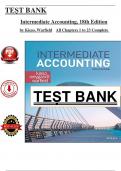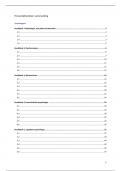Exam (elaborations)
Test Bank - Intermediate Accounting, 18th Edition - Kieso (All Chapters 1 to 23 Covered) > Pdf File
******** INSTANT DOWNLOAD AS PDF FILE ******* Test Bank - Intermediate Accounting, 18th Edition - Kieso (All Chapters 1 to 23 Covered) > Pdf File 1. Test bank for Intermediate Accounting 18th Edition Kieso PDF download 2. Intermediate Accounting 18th Edition Kieso test bank free 3. Where ...
[Show more]




